
Counting plants and small freshwater creatures for citizen science
Local residents, scientists and students are investigating riverbanks in Leiden for the 'Bank Plants' citizen science project. Which plant species are found where? And how can the municipality of Leiden improve its riverbank management to ensure optimal biodiversity?
A waterside encounter
Along Wassenaarseweg, diagonally behind the Gorlaeus Building, four young people gather on a wildly overgrown bank. Their feet and lower legs are hidden behind green and yellow vegetation. In the distance, against a clear blue sky, is the stately Castle Endegeest in Oegstgeest – formerly a psychiatric institution. The foursome appears to be prospective biologists, who have brought all sorts of attributes to inspect the banks with.
Riverbank management helps biodiversity
These third-year biology students are doing an internship on the ‘Bank Plants’ citizen science project. This project, which was initiated by Naturalis and the Institute of Environmental Sciences (CML), is in its second year now. In addition to the students, citizens also participate in the research. The aim of the project is to map out which plant species occur on the banks, as an indication of the quality of these banks. Because the design and management of banks determine the diversity of species, this information helps the municipality to make any changes to its riverbank management and thus improve biodiversity. A job in which citizens can provide excellent help (see box), as last year’s research proved.
-
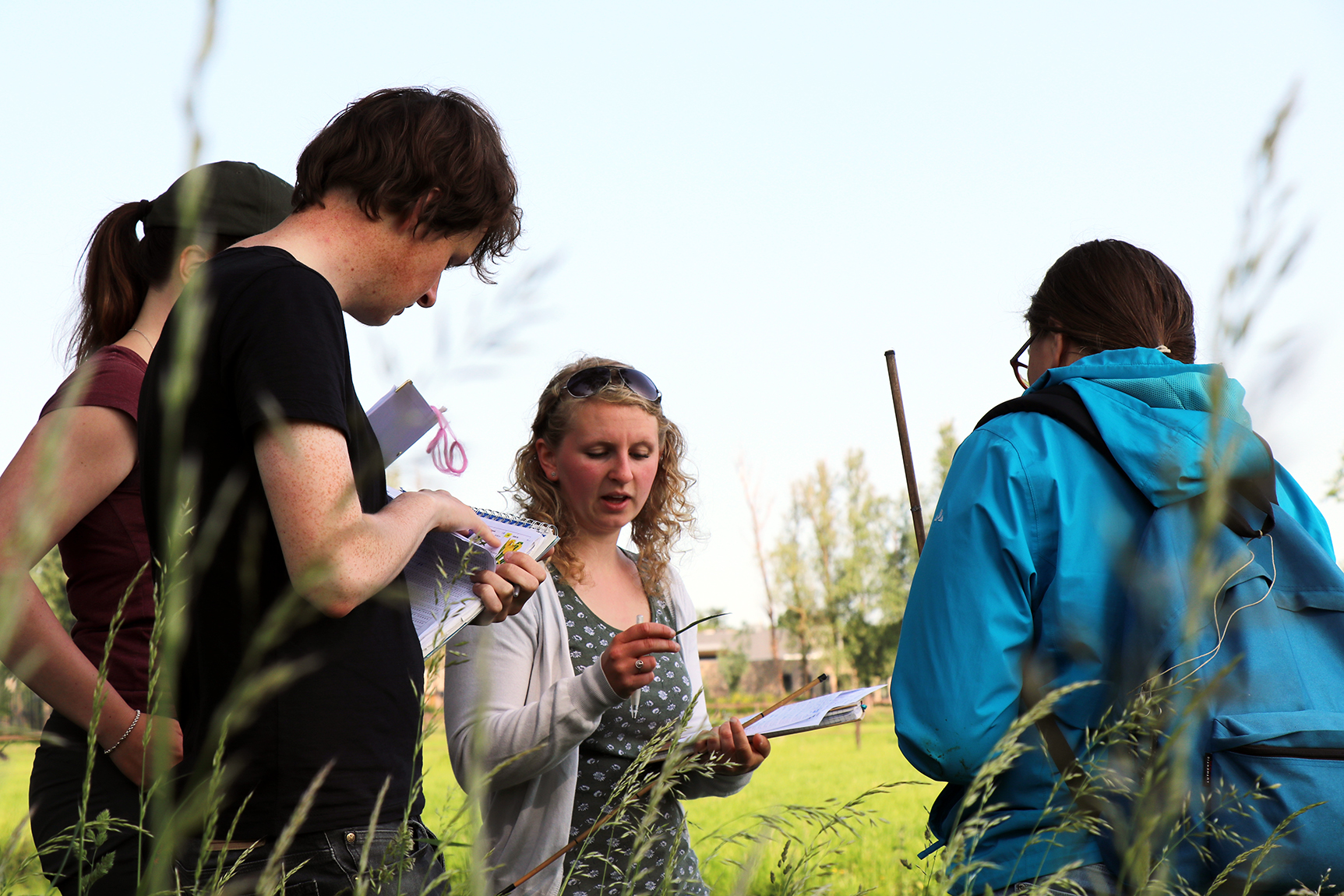
First a short briefing: how do you recognise which plant? -
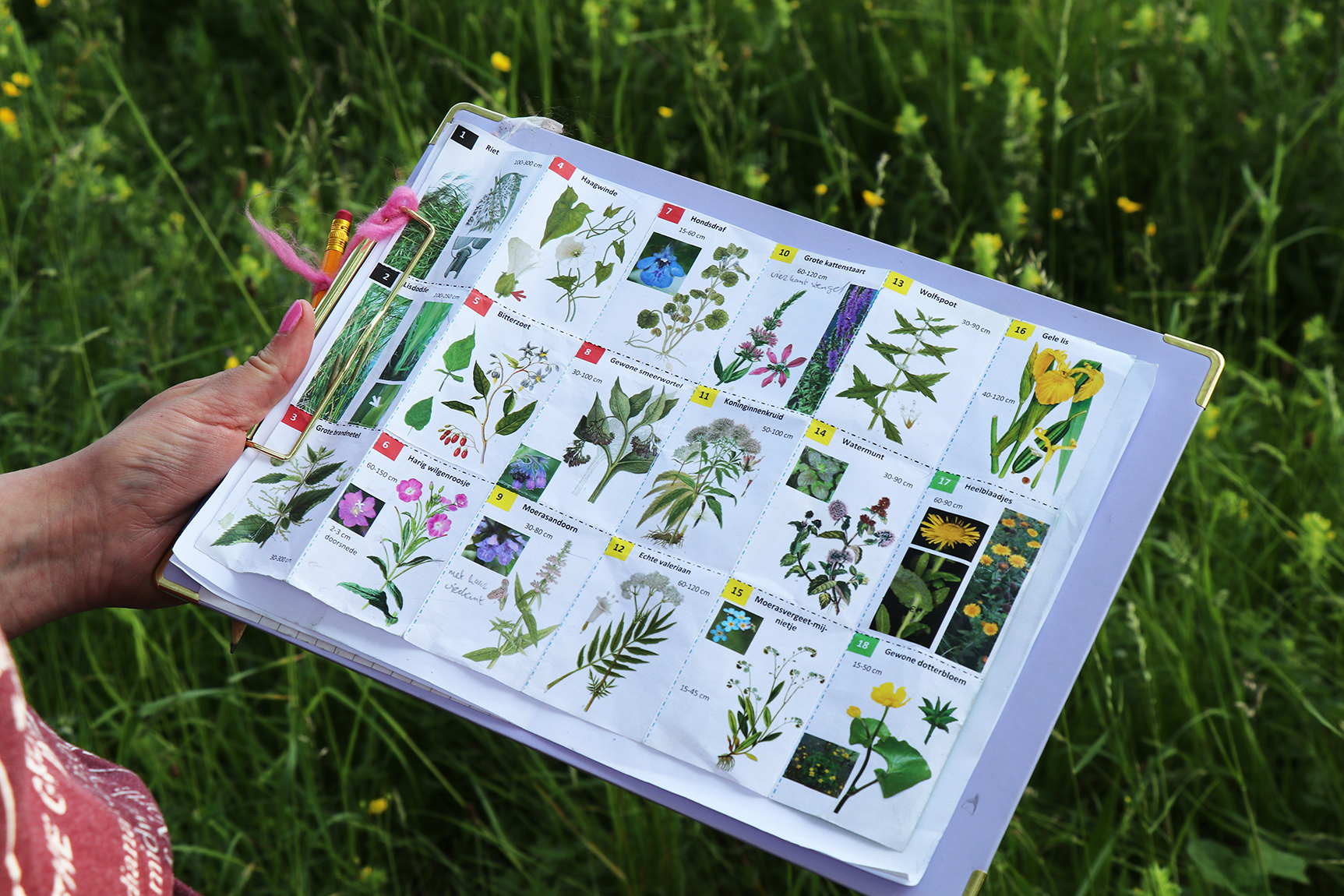
A handy tool: this is what the plants look like -
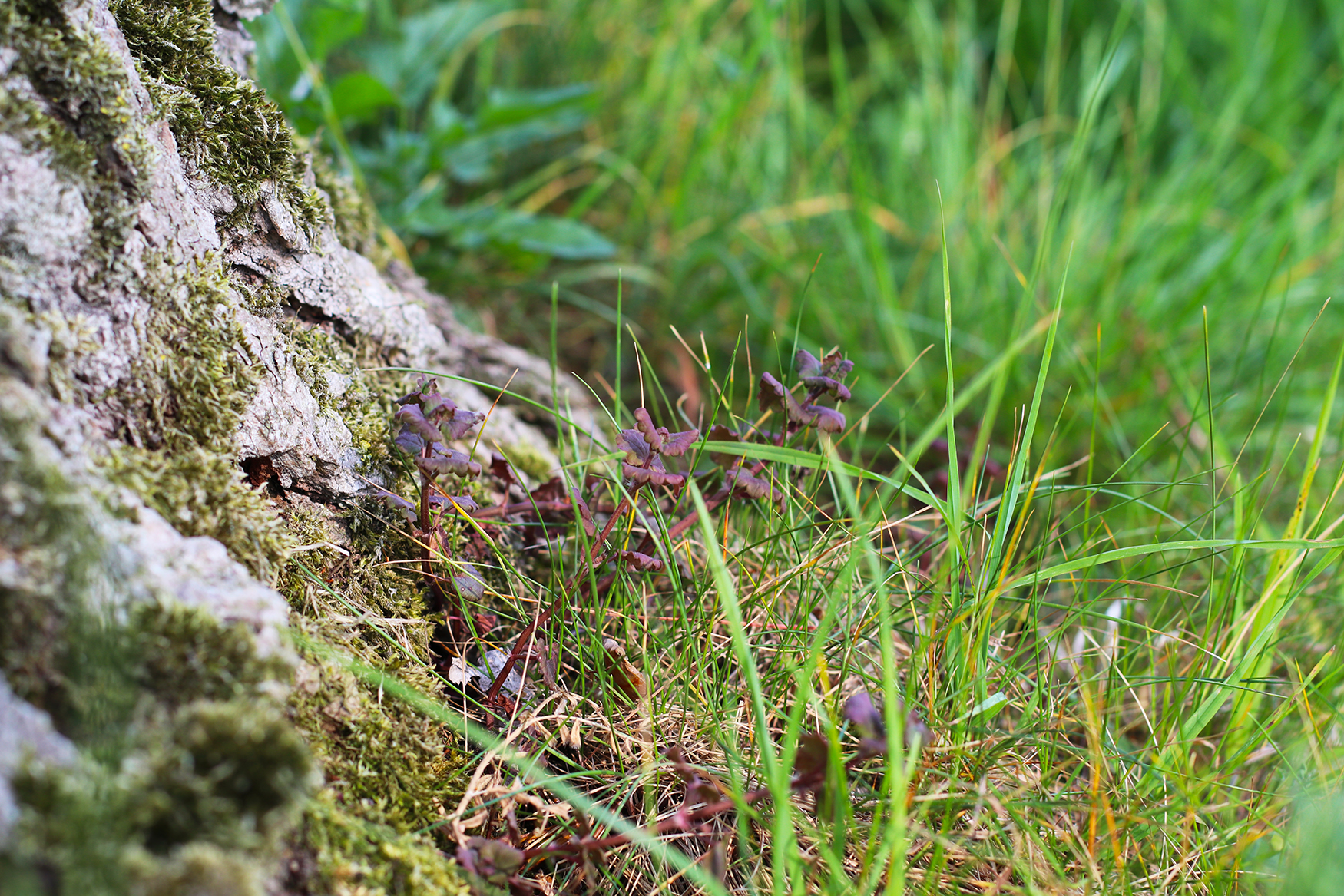
The purple plant ground-ivy grows close to the ground -
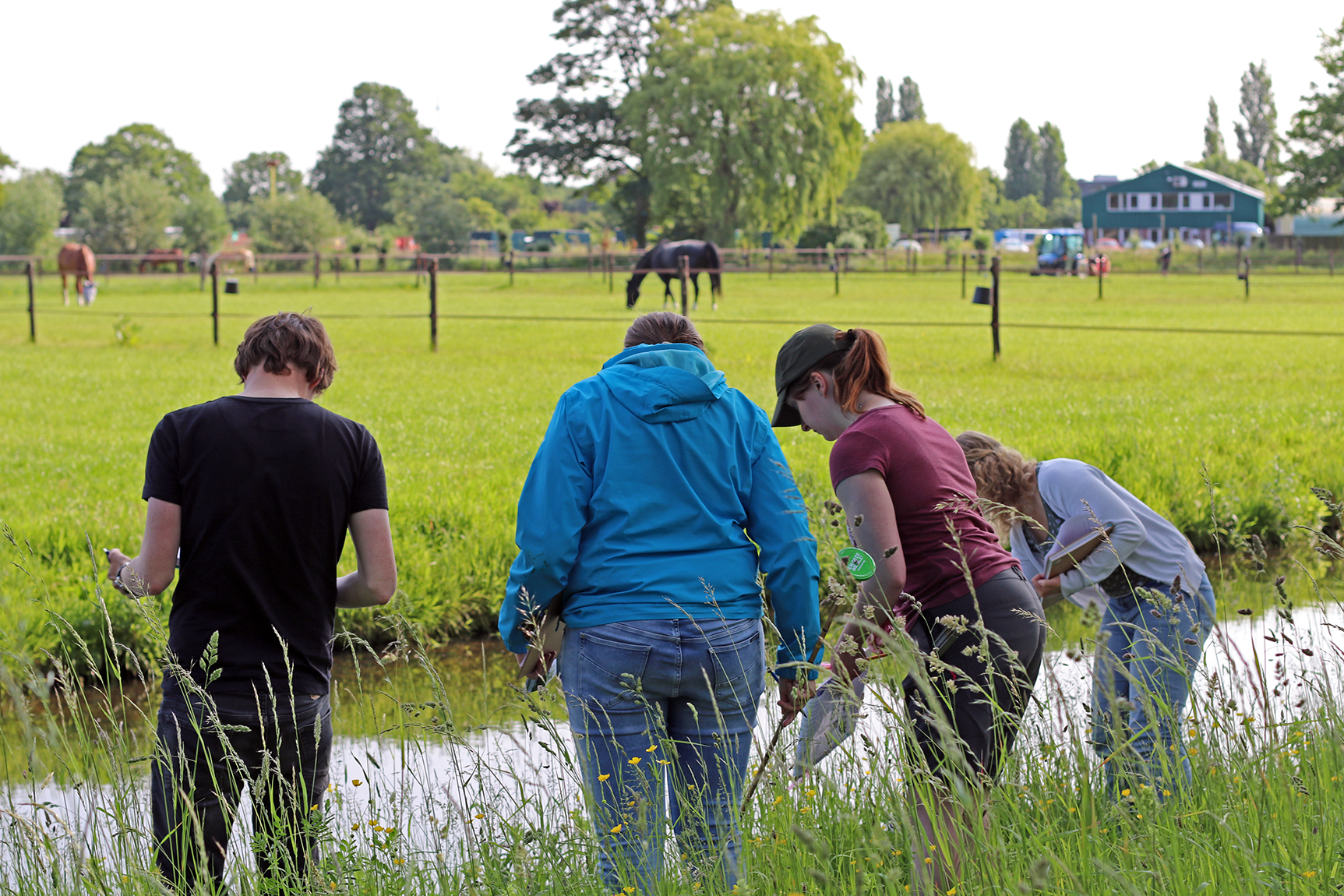
Inspecting the banks for plant species -
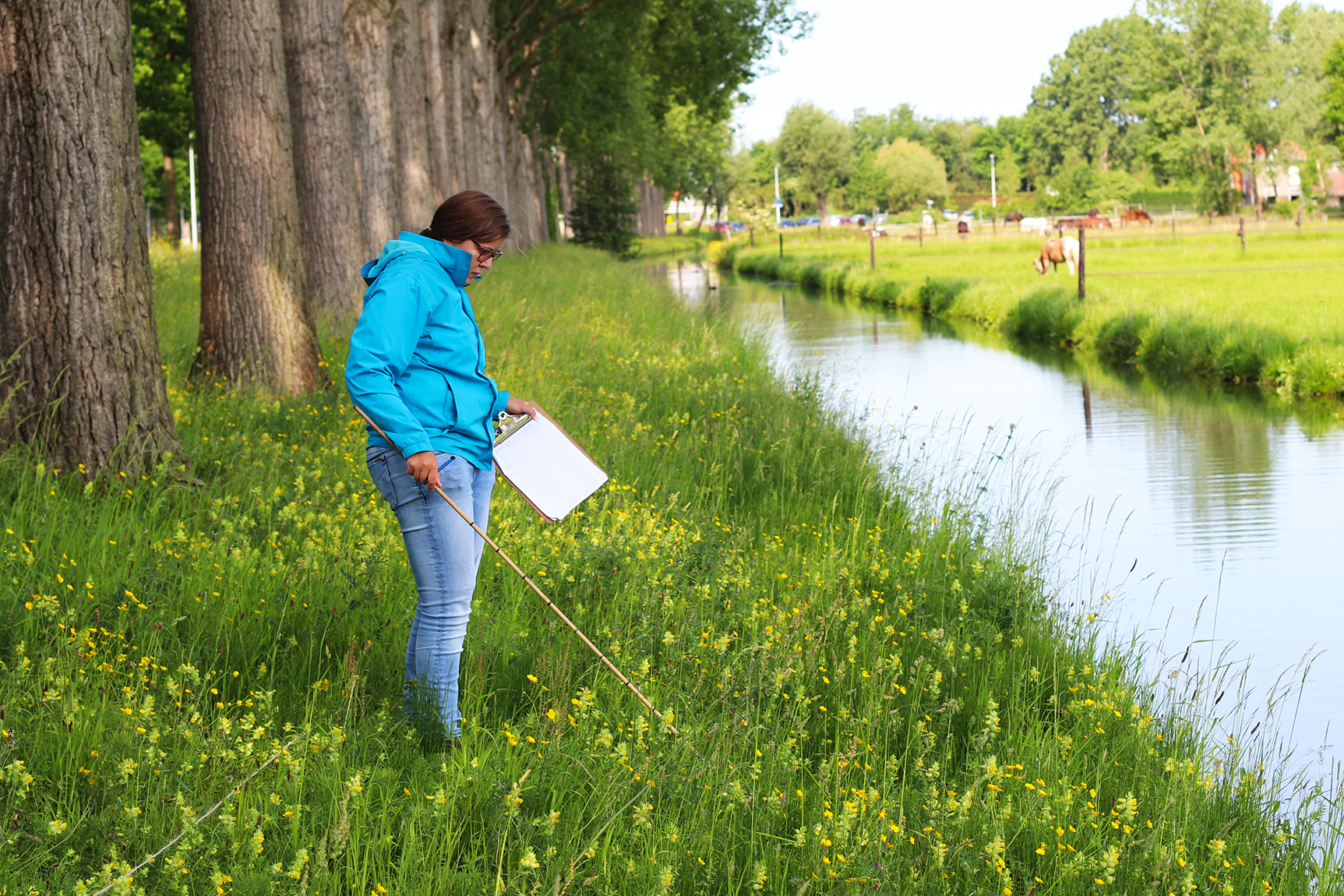
A long stick helps Jeanine with her field work
How do you recognise ground-ivy?
Back to the Wassenaarseweg. Counting the plant species on the bank is individual work, but the students work as a team. They first get a short briefing: Which plants do you already know? How do you recognise the different plant species? ‘You can recognise ground-ivy by its purple colour, and because it grows close to the ground,’ explains Manuela de Zeeuw, one of the four biology students. After the briefing, the students set to work. Some with a stick: useful for keeping plants apart and avoiding contact with any stinging nettles.
-
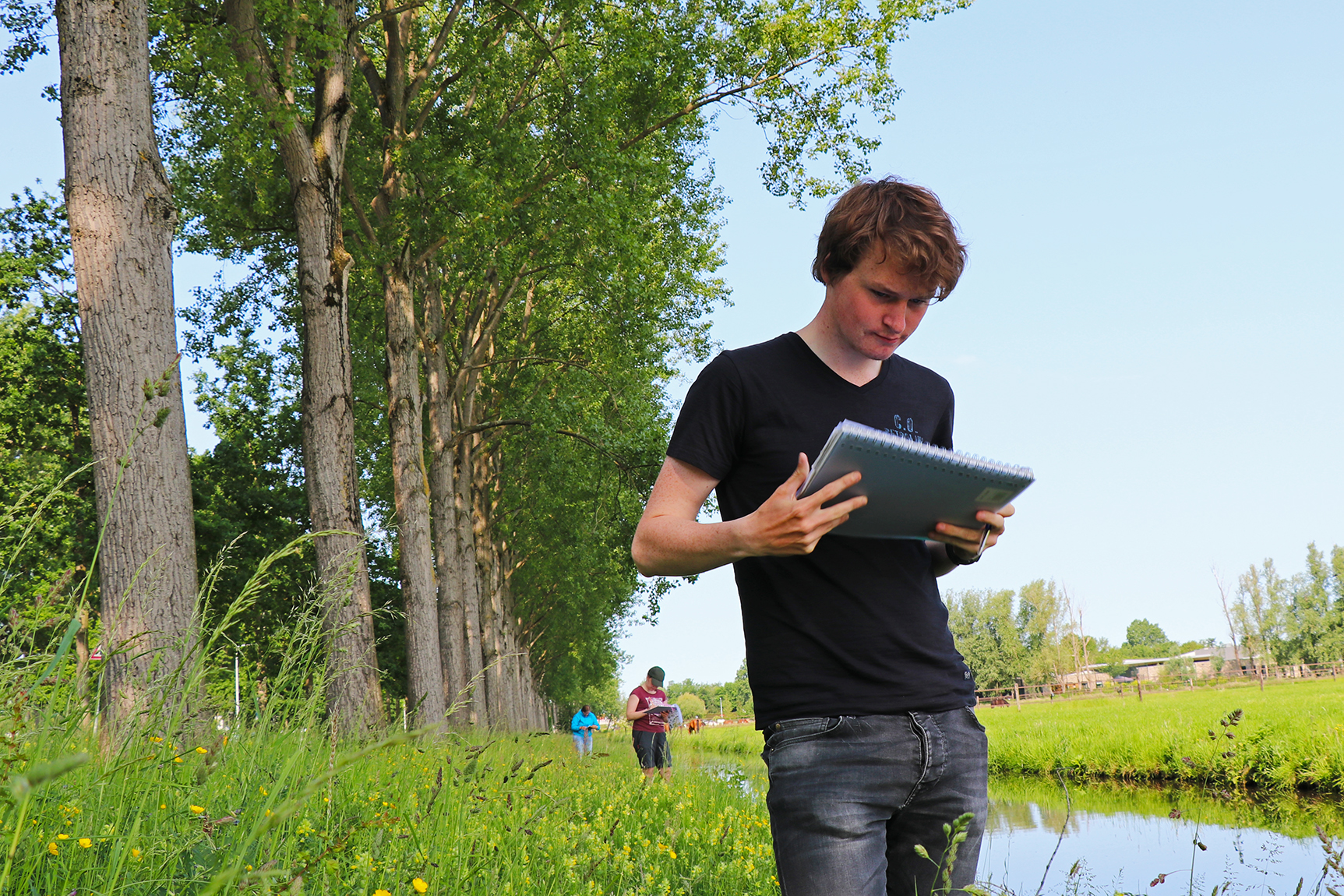
Jeroen notes which plants are on the bank -
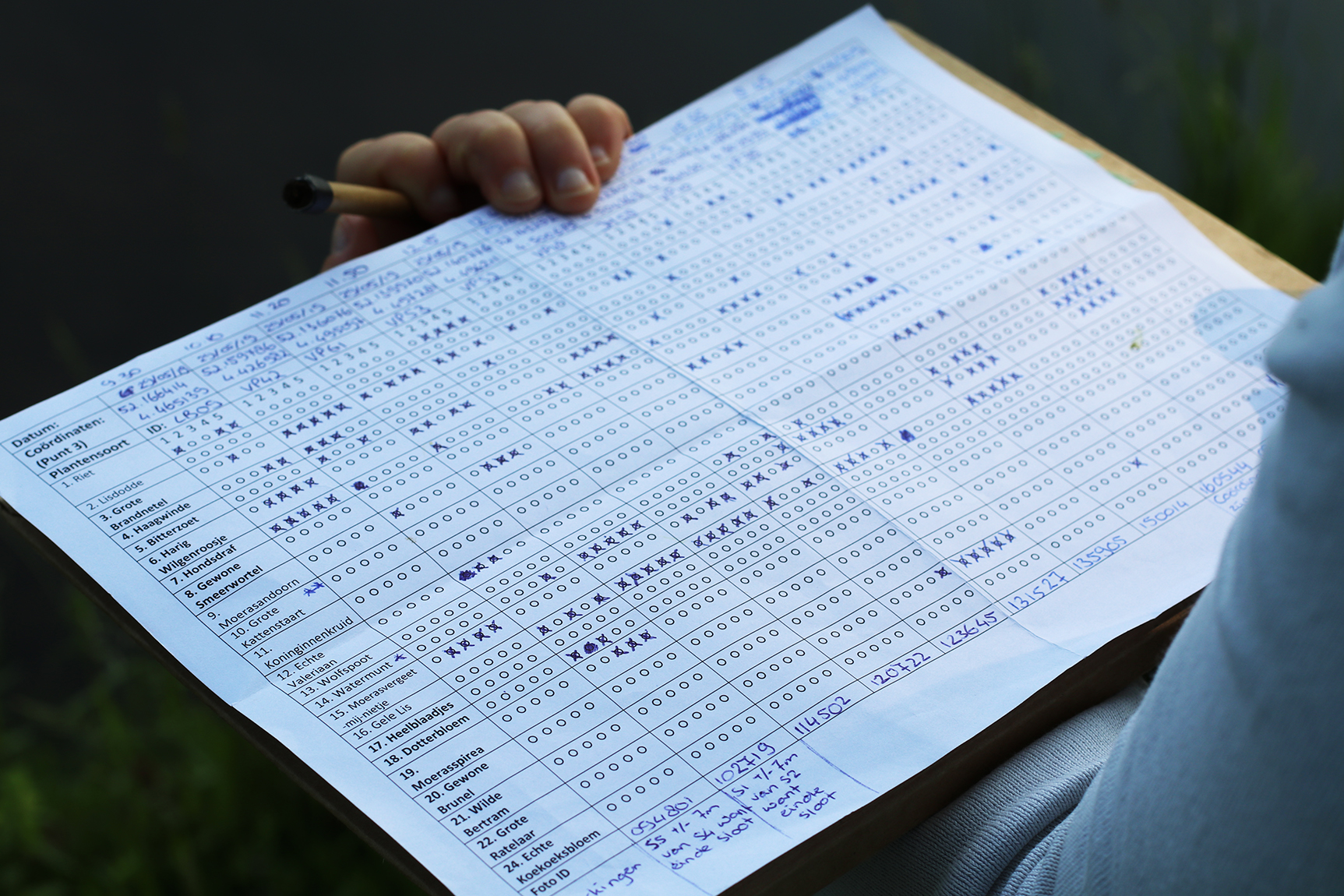
Which plants are where? -
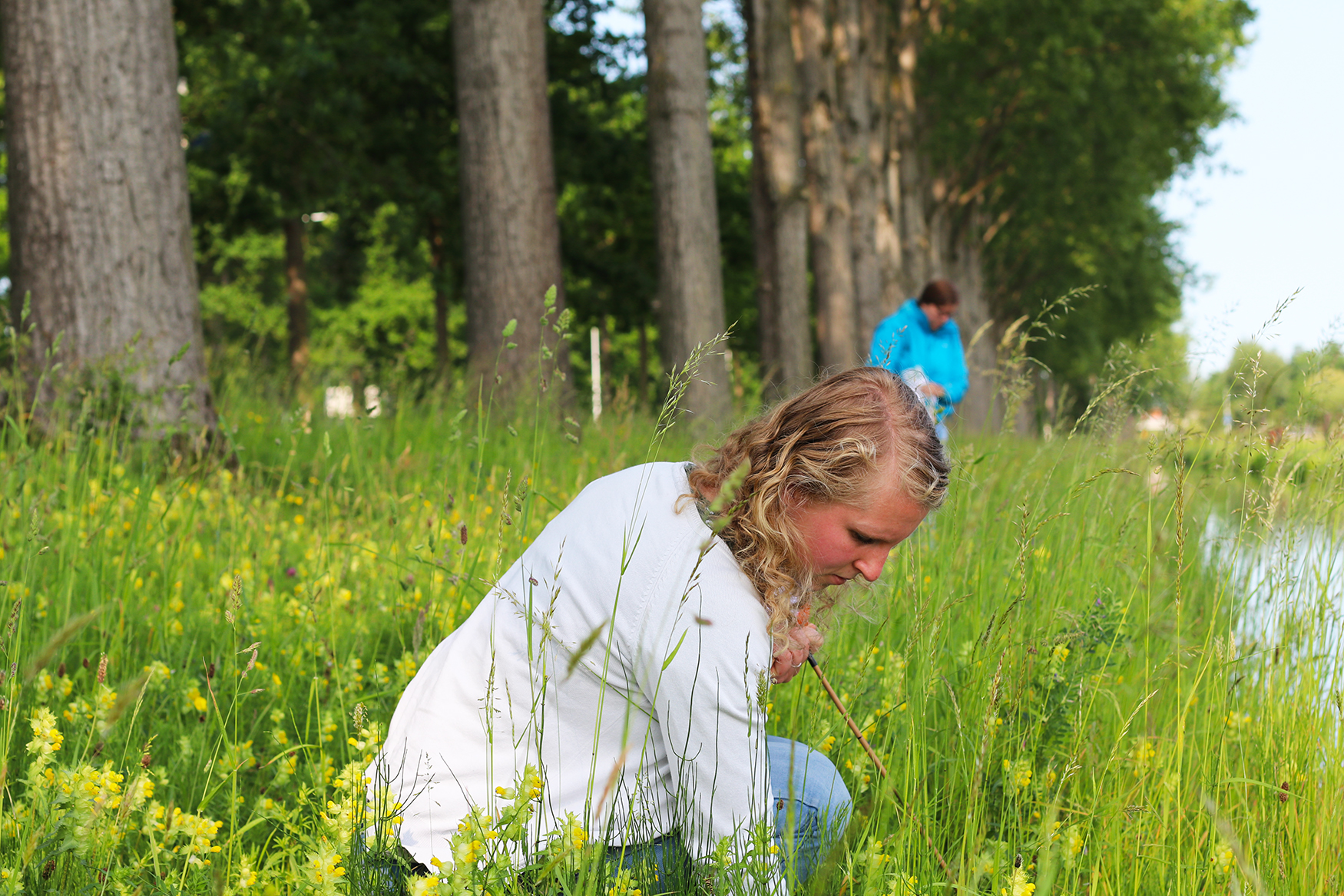
Manuela inspects the bank -
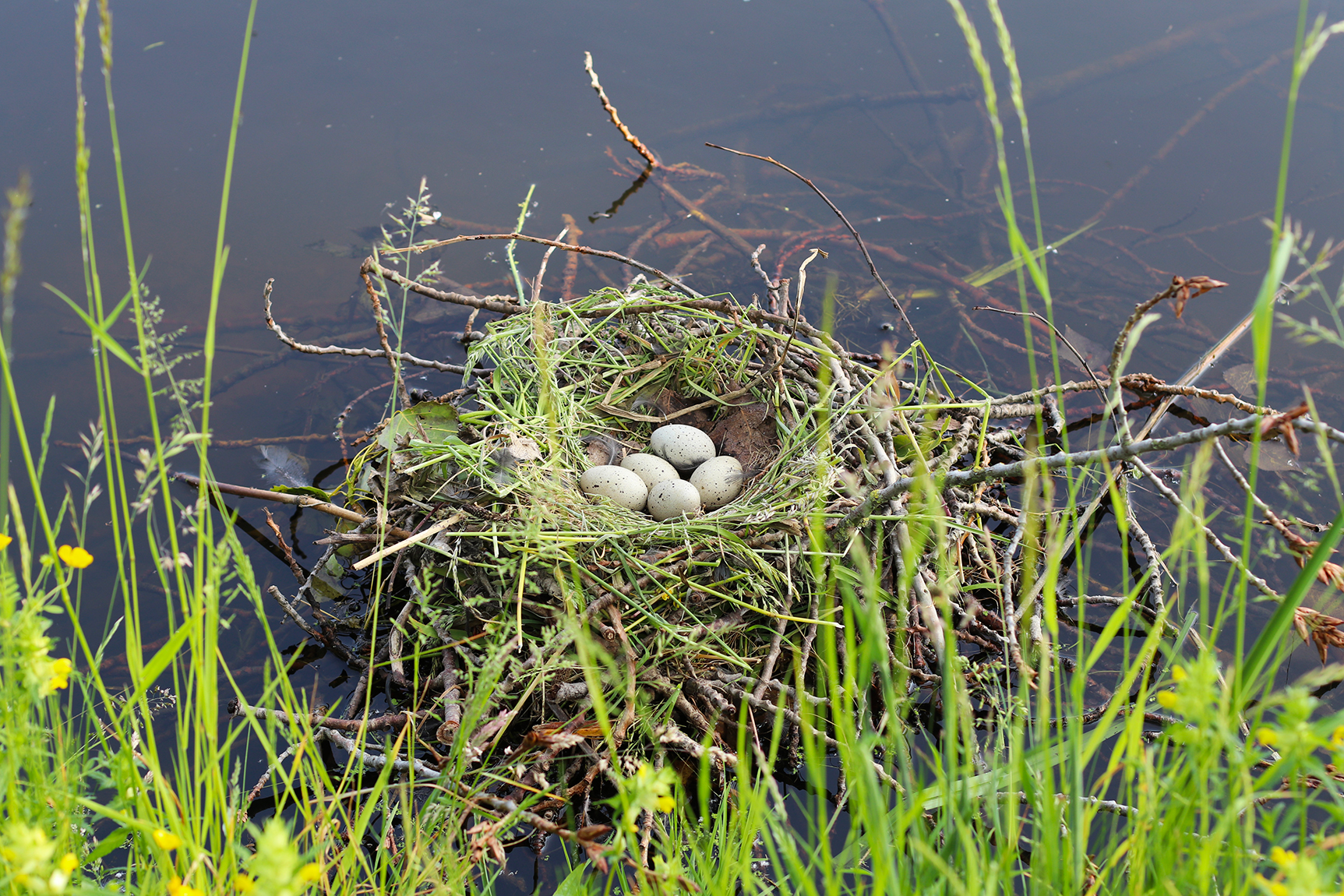
Alongside the bank is a coot's nest with eggs -
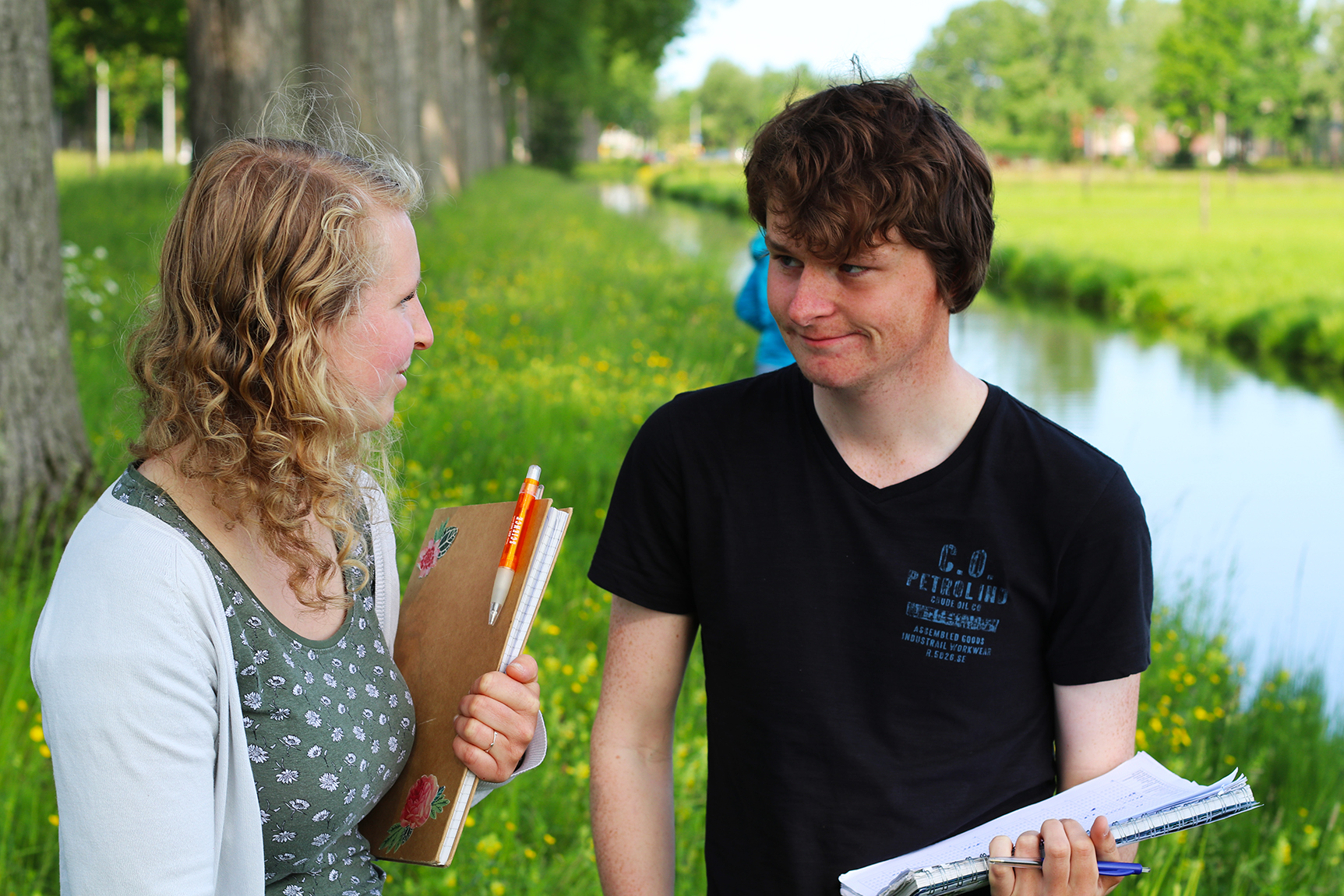
Evaluating together: which species did you spot?
Small freshwater creatures
It is presumed that the right vegetation on the banks will lead to more diversity in the adjacent ditches. Therefore, earlier in 2019, the students already investigated which creatures can be found in the water. ‘Only then do you realise how much life there actually is in a simple ditch,’ says Manuela. For her, doing fieldwork is no great hardship. ‘I love it! It’s great to link science to practice.’ Fellow student Jeroen Koopmans adds: ‘It’s good to be outdoors.’ But nature as a laboratory also has its drawbacks. Manuela: ‘We started back in March. There you are, out in the open, in the icy wind. We really had to wrap ourselves up warm with gloves, hats and scarves,’ she laughs.
Citizen science
The research provides the municipality with valuable information, but the project also serves another purpose. ‘Another goal is to make “ordinary citizens” more aware of their immediate environment and the importance of biodiversity within it,’ says Manuela. And that seems to go hand in hand with the research itself: evaluations have shown that citizens inspect the banks almost as well as scientists and students do.
Manuela has the following to say about the preliminary results: ‘We have seen that the low-quality banks mainly contain plants that occur on more nutrient-rich soils. In other words, the higher-quality banks have fewer nutrients in the soil and higher biodiversity.’ It will take at least three years to find out which bank management works best.
Text and photographs: Bryce Benda
Citizen science
Anyone can apply to become a riverbank expert. Citizens will be taught how to inspect the banks with the aid of workshops, films and photographs. In 2018, local residents and researchers charted the vegetation quality of 246 banks. This year, the bank inspection will take place from 15 May to 15 September. As it will take several years until the results of any changes to the bank management are visible, data on the plant species found on the banks will be needed for the next five to ten years. Jacqueline Henrot, Marco Roos and Wil Tamis are the researchers involved in the project.
